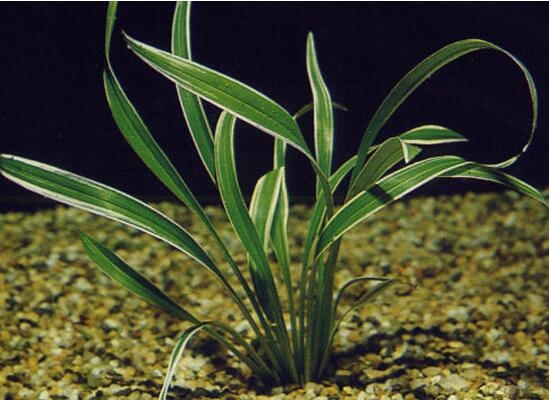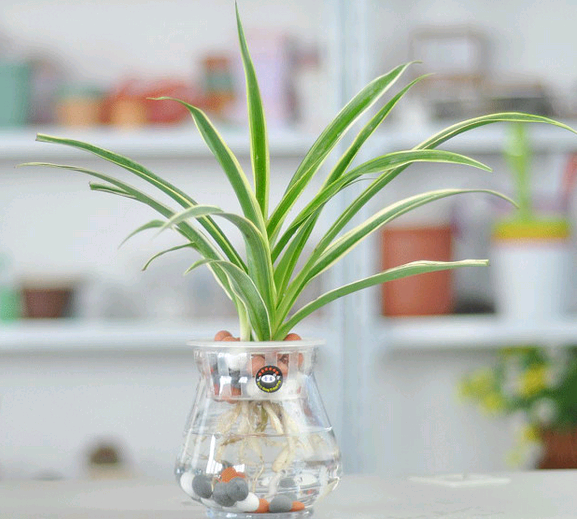How to breed Cymbidium?
The propagation of Cymbidium is very simple, and the tillering method or split method is generally adopted.
Tillering method
The tillering method is not limited by the season and can be carried out indoors in winter, but the survival rate is the highest in spring and autumn.
From spring to autumn, slender, soft and drooping branches are extracted from Yemen, new buds will germinate at the top or node of the branches and grow into seedlings and aerial roots, exposed in the air, the seedlings will be cut from the branches, planted in pots, poured with fresh water, placed in a cool and ventilated place in summer and indoors in winter, the survival rate can reach 100%.
Split-plant method
The split-plant method is usually carried out from March to April in spring, combined with turning the basin and changing the soil.
Pour the large plant out of the flowerpot and cut it with a small shovel or knife from the natural clump of the plant in the middle of the soil ball (it is better to leave 3 stems per plant), or gently pull it open with your hand (do not hurt its rhizome) and plant it in a pot of appropriate size according to the size of the plant. Generally, 7 samples of garden soil and 3 samples of rotten leaf soil were used for culture soil.
In addition, it can also be propagated by seeds, that is, under the condition of 15% temperature, the seeds are covered with soil for half a centimeter and germinated after 14 days.
How to reproduce Cymbidium in 8 steps to teach you how to reproduce
The hanging orchid occupies a very important position in the potted plant at home, because the hanging orchid can not only play a decorative role to make the room more beautiful, but also purify the air in the room. When we have a pot of hanging orchids, how should we breed the hanging orchids? next, let's introduce how to breed the hanging orchid. 8 steps to teach you how to breed Cymbidium.

1. Prepare a pot of orchids, especially those with stolons, which are best (if you really don't have a stolon, you can also separate the species from the root). Or if there are some relatives and friends who have hanging orchids at home, they can get some buds to breed and plant on their own. There are many kinds of hanging orchids: green leaf hanging orchids, Phnom Penh hanging orchids, gold heart hanging orchids, here to my own kind of Phnom Penh hanging orchids as an example, the methods are more or less the same.
2. Gently pinch off the small orchids on the stolon, either with your hands or with scissors. Note that it is easier to survive by keeping some of the roots above. Cut it directly from the stem. Don't let the leaves fall. If you cut it, you can leave a little truncated stem.
3, prepare a flowerpot, do not need too large flowerpot, otherwise easy to accumulate too much water, difficult to take care of, also difficult to move, about 15 centimeters in diameter is almost enough. It is not recommended to use wooden flowerpots, although wooden flowerpots are very beautiful, but if they are watered for a long time, they are easy to deteriorate, rot and mildew. Make sure there are holes in the flowerpot.
4. The orchid is easy to grow and has general requirements for the soil. Of course, the more fertile the soil is, the better. Here, the garden soil with cinder and rotten leaf soil is used, and the cinder increases the air permeability and does not have any nutritional fertility. The rotten leaf soil is nutritious.
5. Insert the buds of the cut small plants into the soil without burying the soil too deep to ensure that the leaves are on the soil surface. There is no need to fertilize immediately after planting. Don't put it in the open air where the sun shines directly. (the temperature for planting and breeding is about 20 °), either in spring or autumn.
6. Pour enough water at once, and then put it in a cool and breathable place. Do not water regularly, because the orchid has not yet grown a new root, does not have the ability to absorb water, watering too much is easy to rot.
7. Usually it begins to take root in about a week. The way to judge whether the root has grown or not is very simple. Grab the leaf a little and pull it up a little. If you feel unable to pull, it will prove that the root has already grown out. Fertilizer can be applied after a month, mainly water and fertilizer.
8. After half a year, the root system of Cymbidium will be very developed. You can trim off part of the root and add some nutritious soil so that it will grow more luxuriantly. Remember to put the orchid next to the sunny window in your home. In winter, you also need to put it in an indoor shelter, or use plastic wrap to make a small greenhouse. To keep warm for the winter. In this way, the hanging orchid is still green and luxuriant in the coming spring.
How to reproduce the orchid? the breeding method of the orchid.
Hanging orchid, also known as Diaolan, hanging orchid, etc., originated in South Africa, is a very common hanging foliage plant. The orchid has leaves clustered at the top of the stem, which droops outward from the basin and flutters with the wind, resembling a crane that spreads its wings, so it is a common family potted plant. Cymbidium is adaptable, drought-tolerant, easy to grow and easy to reproduce, so how does it reproduce? Today we are going to learn the breeding method of Cymbidium.
How to reproduce the orchid? the breeding method of the orchid.
Cymbidium can be propagated by cutting, ramet, sowing and other methods.
Cymbidium cuttings and ramet propagation can be carried out at any time from spring to autumn. Cymbidium has strong adaptability and high survival rate, so it is generally easy to reproduce. When cutting, as long as take the stolon with new buds 5-10 cm into the soil, about a week can take root, about 20 days can be transplanted on the pot, poured water to keep in the shade.
When the plant is divided, the plant can be lifted out of the pot, the old soil and rotten root can be removed, and the old root can be cut open, so that there are three stems on the split plant, and then transplanted and cultured respectively. The clustered stems and leaves on the stolon of Cymbidium can also be cut (in fact, it is a new plant larva, with leaves on the top and air roots on the bottom), and can be planted directly in the flowerpot.
The seed propagation of Cymbidium can be carried out in March every year. Because its seed grain is not big, after sowing the seed, the covering soil above should not be thick, generally 0.5 cm. Under the condition of 15 ℃, the seeds can germinate in about 2 weeks, and then transplant and culture after the seedlings take shape. When the varieties with leaf art were propagated by seeds, the offspring were degenerated into all-green varieties.
How to breed the orchid and the breeding method of the orchid is briefly introduced here. The orchid prefers a warm, moist and semi-overcast environment. However, it has strict requirements for soil, and generally grows better in sandy soil with good drainage and loose and fertile soil. Hanging orchid has a unique vertical leaf, placed at home, elegant and full of vitality.
- Prev

Hydroponic culture method of Cymbidium
The main results are as follows: 1. The method of hydroponic culture of Cymbidium can select the small plants growing at the end of the stem, remove the basin, wash the soil, remove the old and rotten roots, leave the fibrous roots and robust leaves in the container, immerse the roots in water and put them in the room or in a cool place for management.
- Next

How to cultivate Cymbidium
Cymbidium is a perennial evergreen plant of Liliaceae. The underground has well-developed roots. The leaves are basal and broadly linear, often producing long stalks among the leaves and rooting plantlets on the nodes at the end of the stems. The flower stem is slender, tall above the leaf surface, with 10-30 flowers, white flowers. The florescence is from July to August. Hanging orchid branches and leaves drooping
Related
- Fuxing push coffee new agricultural production and marketing class: lack of small-scale processing plants
- Jujube rice field leisure farm deep ploughing Yilan for five years to create a space for organic food and play
- Nongyu Farm-A trial of organic papaya for brave women with advanced technology
- Four points for attention in the prevention and control of diseases and insect pests of edible fungi
- How to add nutrient solution to Edible Fungi
- Is there any good way to control edible fungus mites?
- Open Inoculation Technology of Edible Fungi
- Is there any clever way to use fertilizer for edible fungus in winter?
- What agents are used to kill the pathogens of edible fungi in the mushroom shed?
- Rapid drying of Edible Fungi

